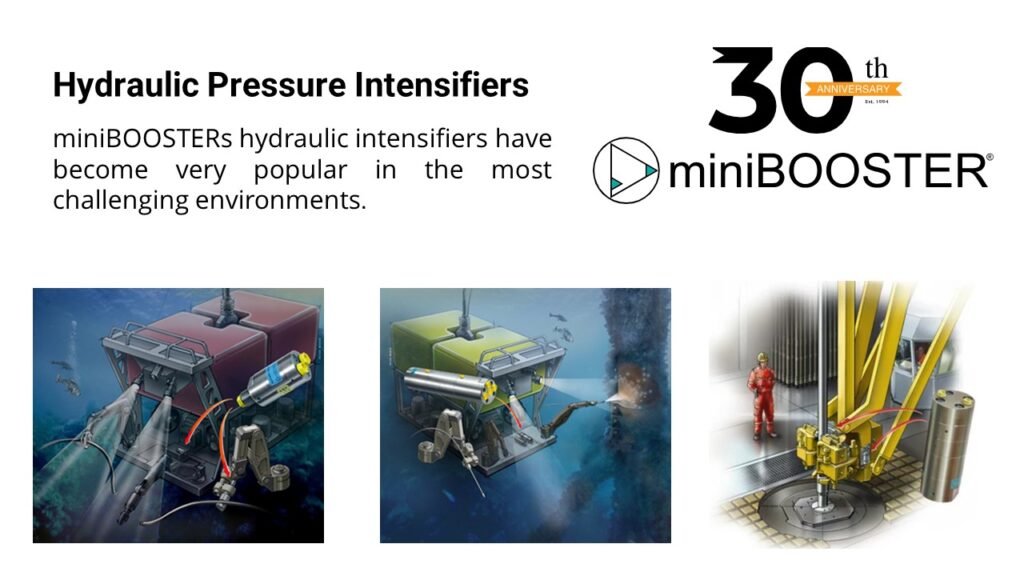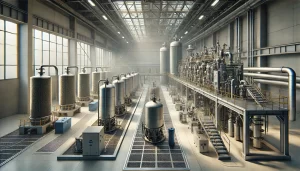
20
Feb
What is a minibooster and how does it work?

Table of Contents
- Introduction
- Introduction to Miniboosters in Hydraulics
- Understanding the Working Principles of Miniboosters
- Benefits and Applications of Miniboosters in Hydraulic Systems
- Comparing Miniboosters with Other Hydraulic Components
- Troubleshooting and Maintenance Tips for Miniboosters in Hydraulics
- Q&A
- Conclusion
Tagline: “Maximize hydraulic power with the minibooster: a compact solution for amplified force and efficiency.”
A minibooster in hydraulics is a compact device designed to increase hydraulic pressure, allowing for enhanced force and efficiency in hydraulic systems. It works by utilizing a small piston area to generate high pressure, which is then transmitted to a larger piston area. This amplification of pressure enables the system to achieve greater force output while maintaining the same flow rate.
Introduction
A minibooster in hydraulics is a compact hydraulic intensifier that is used to increase the pressure of a hydraulic system. It works by utilizing the energy from a low-pressure hydraulic fluid to generate a higher pressure output. This is achieved through a piston arrangement, where the low-pressure fluid acts on a larger piston area, which in turn pushes a smaller piston area to generate a higher pressure output. The minibooster is typically controlled by a pilot valve, which regulates the flow of hydraulic fluid and allows for precise pressure control. Overall, the minibooster is a versatile device that can be used in various hydraulic applications to amplify pressure and enhance system performance.
Introduction to Miniboosters in Hydraulics
What is a minibooster in hydraulics and how does it work?
Hydraulics is a branch of science and engineering that deals with the mechanical properties of liquids, especially water and oil. It plays a crucial role in various industries, including construction, manufacturing, and transportation. One of the key components in hydraulic systems is the minibooster, which is designed to amplify the pressure of the hydraulic fluid.
Trending Insights
Products Categories
A minibooster is a compact and powerful device that is used to increase the pressure of hydraulic fluids. It is commonly used in applications where high pressure is required, such as in heavy machinery and industrial equipment. The minibooster works by utilizing the principle of Pascal’s law, which states that when pressure is applied to a fluid in a confined space, it is transmitted equally in all directions.
The minibooster consists of two main parts: a hydraulic piston and a hydraulic cylinder. The hydraulic piston is connected to the hydraulic system and is responsible for generating the initial pressure. The hydraulic cylinder, on the other hand, is connected to the load and is responsible for transmitting the pressure to the desired location.
When the hydraulic fluid enters the minibooster, it exerts pressure on the hydraulic piston. This pressure is then transmitted to the hydraulic cylinder, which amplifies the pressure even further. The amplified pressure is then used to perform various tasks, such as lifting heavy objects or operating hydraulic machinery.
One of the key advantages of using a minibooster is its compact size. Unlike traditional hydraulic systems, which require large and bulky components, the minibooster can be easily integrated into existing systems without taking up too much space. This makes it ideal for applications where space is limited, such as in mobile machinery or vehicles.
Another advantage of using a minibooster is its efficiency. By amplifying the pressure of the hydraulic fluid, the minibooster allows for the same amount of work to be done with less input power. This not only reduces energy consumption but also increases the overall efficiency of the hydraulic system.
Furthermore, the minibooster offers precise control over the pressure of the hydraulic fluid. By adjusting the size of the hydraulic piston and cylinder, the pressure can be fine-tuned to meet specific requirements. This level of control is crucial in applications where precise and accurate pressure control is necessary, such as in the aerospace or automotive industry.
In conclusion, a minibooster is a compact and powerful device that is used to increase the pressure of hydraulic fluids. It works by utilizing the principle of Pascal’s law and consists of a hydraulic piston and cylinder. The minibooster offers several advantages, including its compact size, efficiency, and precise pressure control. It is an essential component in hydraulic systems and plays a crucial role in various industries.
Understanding the Working Principles of Miniboosters
A minibooster is a device used in hydraulics to increase the pressure of a hydraulic system. It is commonly used in applications where a higher pressure is required than what the existing hydraulic system can provide. Understanding the working principles of miniboosters is essential to grasp their functionality and benefits.
To comprehend how a minibooster works, it is important to first understand the basic principles of hydraulics. Hydraulics is a branch of science that deals with the mechanical properties of liquids, particularly water and oil, and their applications in engineering. In a hydraulic system, a fluid, usually oil, is used to transmit power from one point to another.
A minibooster consists of two main components: a low-pressure side and a high-pressure side. The low-pressure side is connected to the existing hydraulic system, while the high-pressure side is connected to the load or the component that requires the higher pressure. The minibooster acts as a bridge between the two sides, increasing the pressure of the fluid as it flows from the low-pressure side to the high-pressure side.
The working principle of a minibooster is based on the principle of Pascal’s law, which states that when pressure is applied to a fluid in a confined space, it is transmitted equally in all directions. In the case of a minibooster, the low-pressure side applies pressure to the fluid, which is then transmitted to the high-pressure side.
When the fluid enters the minibooster from the low-pressure side, it passes through a piston assembly. The piston assembly consists of a piston and a cylinder, which are designed to increase the pressure of the fluid. As the fluid flows through the piston assembly, the piston moves, compressing the fluid and increasing its pressure.
The increased pressure is then transmitted to the high-pressure side of the minibooster, where it is used to power the load or component. This allows the hydraulic system to generate a higher pressure than what it is originally capable of, enabling it to perform tasks that require greater force or power.
One of the key advantages of using a minibooster is its compact size. Unlike traditional hydraulic systems that require large pumps and cylinders to generate high pressure, a minibooster can achieve the same result in a much smaller package. This makes it ideal for applications where space is limited or where portability is important.
Additionally, miniboosters are highly efficient. By increasing the pressure of the fluid, they allow the hydraulic system to operate at a higher power output without the need for additional energy input. This not only saves energy but also reduces the overall operating costs of the system.
In conclusion, a minibooster is a device used in hydraulics to increase the pressure of a hydraulic system. It works by utilizing the principles of Pascal’s law to transmit pressure from the low-pressure side to the high-pressure side. Understanding the working principles of miniboosters is crucial in order to fully grasp their functionality and benefits. With their compact size and high efficiency, miniboosters are a valuable tool in applications that require higher pressure than what the existing hydraulic system can provide.
Benefits and Applications of Miniboosters in Hydraulic Systems
Benefits and Applications of Miniboosters in Hydraulic Systems
Hydraulic systems are widely used in various industries for their ability to generate and transmit power efficiently. These systems rely on the principle of fluid mechanics to transfer energy from one point to another. However, in some cases, the pressure generated by the hydraulic pump may not be sufficient to meet the requirements of the application. This is where a minibooster comes into play.
A minibooster, also known as a hydraulic intensifier, is a device that amplifies the pressure of a hydraulic system. It is typically used in applications where high pressure is required, such as in heavy machinery, construction equipment, and industrial processes. The minibooster works by taking the low-pressure hydraulic fluid from the pump and increasing its pressure to a higher level.
One of the key benefits of using a minibooster in a hydraulic system is its ability to generate high pressure without the need for a larger pump. This means that the overall size and weight of the hydraulic system can be reduced, making it more compact and easier to install in tight spaces. Additionally, a smaller pump can be used, resulting in lower energy consumption and reduced operating costs.
Another advantage of using a minibooster is its ability to provide precise control over the pressure in the hydraulic system. By adjusting the intensification ratio of the minibooster, the pressure can be finely tuned to meet the specific requirements of the application. This level of control is particularly important in applications where precision is crucial, such as in the aerospace and automotive industries.
In addition to their benefits in terms of pressure amplification and control, miniboosters also offer a range of applications in various industries. For example, in the oil and gas industry, miniboosters are used to increase the pressure of hydraulic fluid in subsea systems, allowing for the efficient operation of valves and other equipment at great depths. Similarly, in the mining industry, miniboosters are used to power hydraulic cylinders and other equipment in underground operations.
Furthermore, miniboosters find applications in the field of automation and robotics. They can be used to provide the necessary pressure to actuate hydraulic cylinders and control the movement of robotic arms and other automated systems. This enables precise and efficient operation, improving productivity and reducing downtime.
In conclusion, miniboosters play a crucial role in hydraulic systems by amplifying the pressure of the hydraulic fluid. They offer several benefits, including the ability to generate high pressure without the need for a larger pump, precise control over pressure, and a wide range of applications in various industries. By incorporating miniboosters into hydraulic systems, industries can achieve greater efficiency, reduce costs, and improve overall performance.
Comparing Miniboosters with Other Hydraulic Components
Comparing Miniboosters with Other Hydraulic Components
In the world of hydraulics, there are various components that play a crucial role in the functioning of hydraulic systems. One such component is the minibooster. But how does it compare to other hydraulic components? Let’s delve into the details and explore the unique features and advantages of miniboosters.
To begin with, let’s understand what a minibooster is. A minibooster is a compact hydraulic intensifier that amplifies low-pressure hydraulic signals to higher pressures. It is commonly used in applications where there is a need for high-pressure hydraulic power, but the available pressure is insufficient. The minibooster acts as a force multiplier, increasing the pressure of the hydraulic fluid to meet the requirements of the system.
When comparing miniboosters with other hydraulic components, one key aspect to consider is their size. Miniboosters are significantly smaller and more compact than other hydraulic components such as pumps or cylinders. This compact size makes them ideal for applications where space is limited or where portability is a requirement. Additionally, the smaller size of miniboosters allows for easier installation and integration into existing hydraulic systems.
Another important factor to consider is the efficiency of miniboosters compared to other hydraulic components. Miniboosters are known for their high efficiency, as they can achieve pressure amplification ratios of up to 10:1 or even higher. This means that a minibooster can generate a significantly higher output pressure compared to the input pressure, resulting in greater hydraulic power. In contrast, other hydraulic components may not be able to achieve such high pressure amplification ratios, making miniboosters a preferred choice in applications that demand high-pressure output.
Furthermore, miniboosters offer precise control over the pressure amplification process. They can be adjusted to provide the desired output pressure, allowing for fine-tuning of the hydraulic system. This level of control is particularly beneficial in applications where precise pressure regulation is required, such as in hydraulic presses or testing equipment. Other hydraulic components may not offer the same level of control, making miniboosters a valuable asset in such scenarios.
In terms of versatility, miniboosters excel in their ability to work with a wide range of hydraulic fluids. They can handle various types of fluids, including mineral oil, water glycol, and synthetic fluids. This versatility makes miniboosters compatible with different hydraulic systems, regardless of the specific fluid used. Other hydraulic components may have limitations in terms of the type of fluid they can handle, making miniboosters a flexible choice for hydraulic applications.
In conclusion, miniboosters stand out among other hydraulic components due to their compact size, high efficiency, precise control, and versatility. Their ability to amplify low-pressure hydraulic signals to higher pressures makes them an invaluable asset in applications that require high-pressure hydraulic power. Whether it’s in industrial machinery, mobile equipment, or any other hydraulic system, miniboosters offer a reliable and efficient solution. So, the next time you encounter a hydraulic system that requires a boost in pressure, consider the minibooster as your go-to component.
Troubleshooting and Maintenance Tips for Miniboosters in Hydraulics
What is a minibooster in hydraulics and how does it work?
Hydraulics is a branch of science and engineering that deals with the mechanical properties of liquids, especially water or oil, and their applications in engineering. It plays a crucial role in various industries, including construction, manufacturing, and transportation. One important component in hydraulic systems is the minibooster, which enhances the performance and efficiency of the system.
A minibooster, also known as a hydraulic intensifier, is a device that amplifies the pressure of a hydraulic fluid. It is typically used in applications where high pressure is required, such as heavy machinery and hydraulic presses. The minibooster works by utilizing the principle of Pascal’s law, which states that pressure exerted on a fluid is transmitted equally in all directions.
The minibooster consists of two main components: a low-pressure side and a high-pressure side. The low-pressure side is connected to the hydraulic system, while the high-pressure side is connected to the load or the component that requires high pressure. The minibooster acts as a multiplier, increasing the pressure from the low-pressure side to the high-pressure side.
The operation of a minibooster is relatively simple. When hydraulic fluid enters the low-pressure side, it flows through a small piston or plunger. As the fluid flows, it exerts pressure on the piston, which in turn pushes against a larger piston or plunger on the high-pressure side. This amplifies the pressure of the hydraulic fluid, allowing it to reach the desired level.
To ensure the proper functioning of a minibooster, regular maintenance and troubleshooting are essential. One common issue that may arise is leakage. If there is a leak in the minibooster, it can result in a loss of pressure and reduced performance. To address this issue, it is important to inspect the seals and O-rings regularly and replace them if necessary.
Another potential problem is contamination. If foreign particles, such as dirt or debris, enter the minibooster, they can cause blockages and affect its performance. Regularly cleaning the minibooster and using proper filtration systems can help prevent contamination and maintain optimal performance.
In addition to maintenance, it is important to understand the limitations of a minibooster. While it can significantly increase the pressure of a hydraulic system, it has a limited capacity. Exceeding the maximum pressure rating of a minibooster can lead to damage and failure. Therefore, it is crucial to ensure that the minibooster is properly sized and matched to the requirements of the hydraulic system.
In conclusion, a minibooster is a valuable component in hydraulic systems that enhances pressure and performance. By utilizing the principles of Pascal’s law, it amplifies the pressure of hydraulic fluid, allowing it to meet the demands of various applications. Regular maintenance and troubleshooting are essential to ensure the proper functioning of a minibooster, including addressing issues such as leakage and contamination. Understanding the limitations of a minibooster is also crucial to prevent damage and failure. With proper care and attention, a minibooster can contribute to the efficiency and reliability of hydraulic systems in various industries.
Q&A
1. What is a minibooster in hydraulics?
A minibooster in hydraulics is a compact hydraulic intensifier that increases the pressure of a hydraulic system.
2. How does a minibooster work?
A minibooster works by utilizing a low-pressure hydraulic input to generate a higher-pressure hydraulic output. It uses a piston and cylinder arrangement to amplify the pressure.
3. What are the main components of a minibooster?
The main components of a minibooster include a low-pressure inlet, a high-pressure outlet, a piston, a cylinder, and control valves.
4. What are the applications of miniboosters in hydraulics?
Miniboosters are commonly used in various hydraulic systems where high-pressure output is required, such as in industrial machinery, hydraulic presses, and hydraulic tools.
5. What are the advantages of using a minibooster?
The advantages of using a minibooster include compact size, high-pressure amplification, improved system efficiency, and the ability to achieve high pressures without the need for large hydraulic pumps.
Conclusion
A minibooster in hydraulics is a compact hydraulic intensifier that is used to increase the pressure of a hydraulic system. It works by utilizing a small piston to generate a high-pressure output by amplifying the force applied to a larger piston. This amplification is achieved through the use of hydraulic oil, which is pressurized by the small piston and then transferred to the larger piston, resulting in a higher output pressure. Overall, a minibooster is a useful device in hydraulic systems for boosting pressure levels efficiently.




